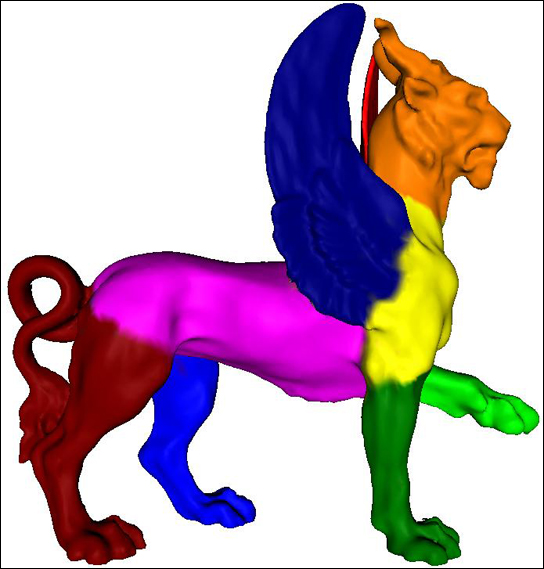In this research, a model is proposed for decomposition of 3D objects based on Reeb-graphs. The model is motivated by perceptual principles and supports identification of salient object protrusions. Experimental results have demonstrate the effectiveness of the proposed approach with respect to different solutions appeared in the literature, and with reference to ground-truth data obtained by manually decomposing 3D objects.

3D mesh partitioning
Our solution falls in the semantic oriented category and is motivated by the need to overcome limitations of geometry based solutions which mainly rely on the sole curvature information to perform mesh decomposition. In particular, we propose the use of Reeb-graph to extract structural and topological information of a mesh surface and to drive the decomposition process. Curvature information is used to refine boundaries between object parts in accordance to the minima rule.
Thus, object decomposition is achieved by a two steps approach accounting for Reeb-graph construction and refinement. In the construction step, topological as well as metric properties of the object surface are used to build the Reeb-graph. Due to the metric properties of the object that are considered for building the Reeb-graph (i.e., the AGD is used), the structure of this graph captures the object protrusions. In the refinement step, the Reeb-graph is subject to an editing process by which deep concavity and adjacency are used to support fine localization of part boundaries.
In doing so, the main goal of our contribution is to provide and experiment a model to support perceptually consistent decomposition of 3D objects to enable reuse and retrieval of parts of 3D models archived in large model repositories.